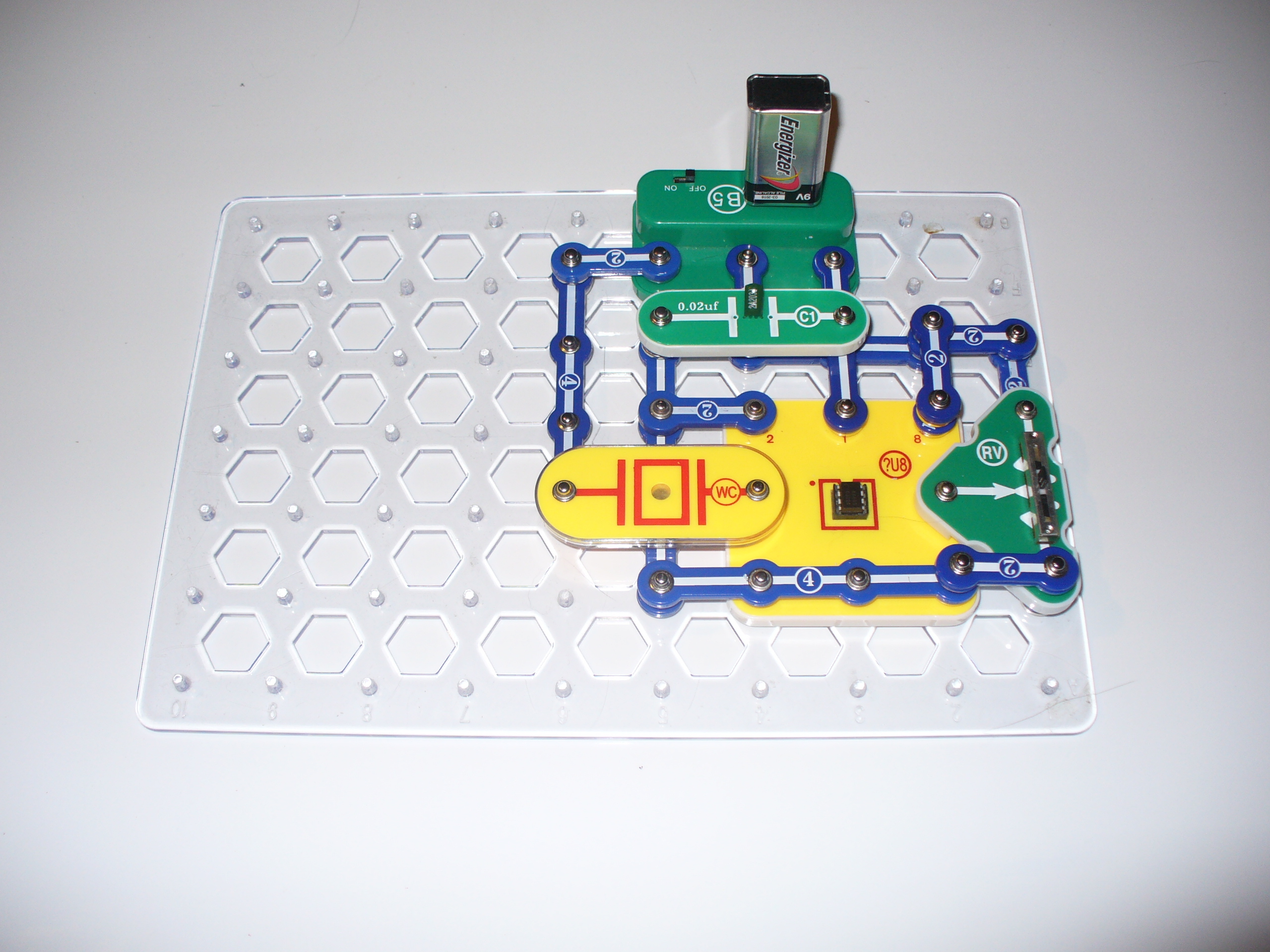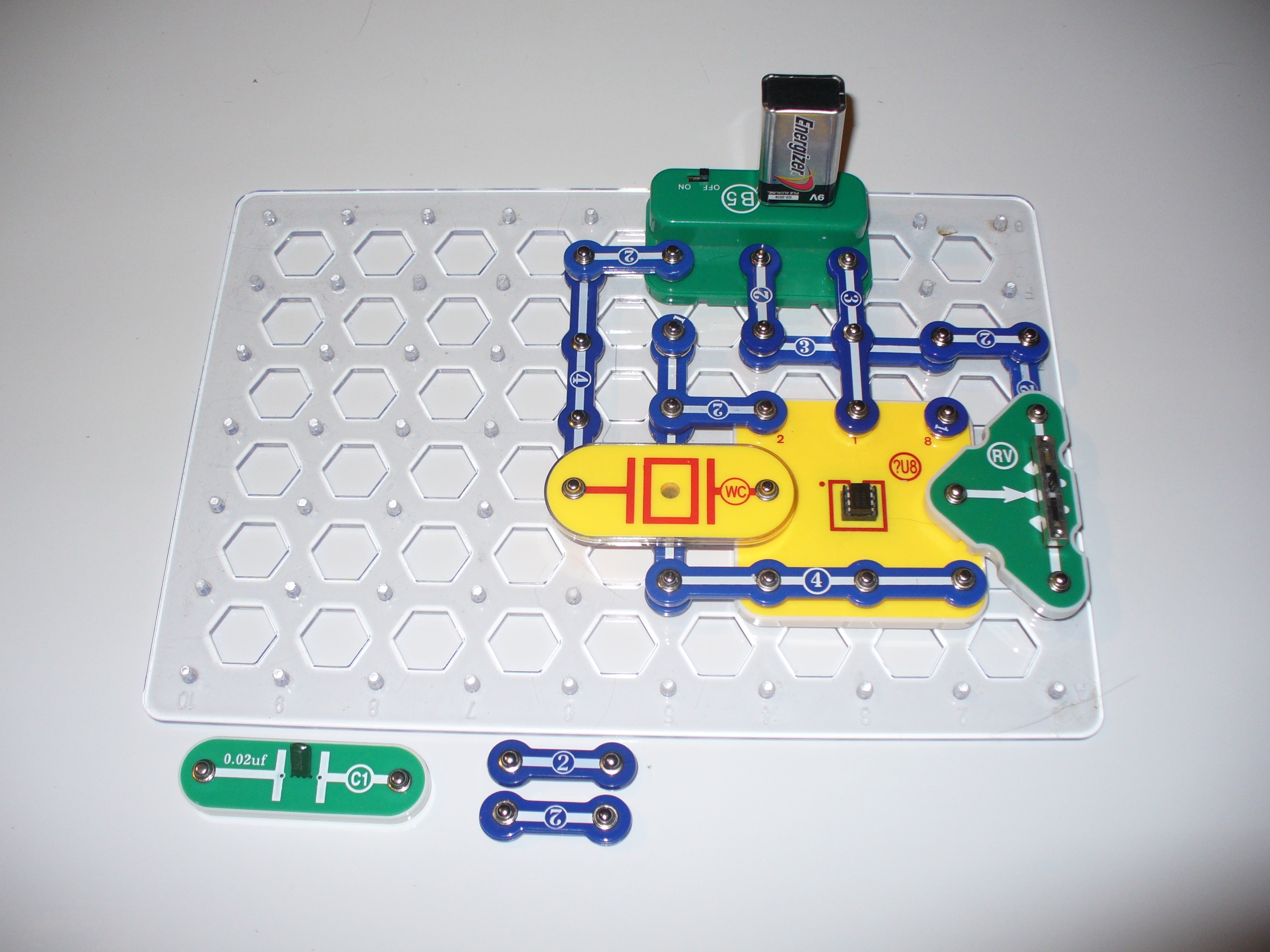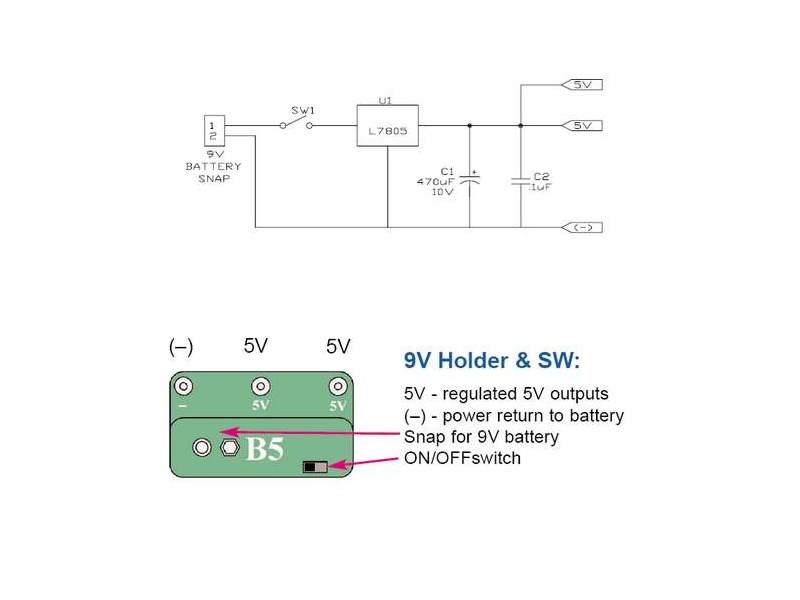In this article, you will learn how to improve your collection of Snap Circuits blocks by adding a 555 Timer IC. You will learn the functions the pins on the 555 chip. You will learn that when the 555 is in astable mode, the output of pin 3 is a continuous stream of pulses called a square wave that can be heard on a piezoelectric speaker as a tone. Finally you will learn how to build an astable mode circuit for the 555.
Snap Circuits is an educational toy that teaches electronics with solderless snap-together electronic components. Each component has the schematic symbol and a label printed on its plastic case that is color-coded for easy identification. They snap together with ordinary clothing snaps. The components also snap onto a 10 X 7 plastic base grid analogous to a solderless breadboard.
All the kits include manuals printed in color with easy-to-follow diagrams to assemble the projects. The illustrations for each project look almost exactly like what the components will look like on the base grid when finished. Because the electronic symbol is printed on each electronic component, once the project is completed, it will look almost exactly like an electronic schematic.
Currently there are no Snap Circuits sets that have the 555 Timer IC. So, you will need to purchase a 555 Timer IC from RadioShack. If you don’t have the Snap Circuits Extreme SC-750 set you can purchase the Snap Circuits Eight-Pin IC Socket block from C&S Sales. Adding these two components to your set of Snap Circuits blocks will allow you to create dozens of circuits built around the 555 Timer IC.
















